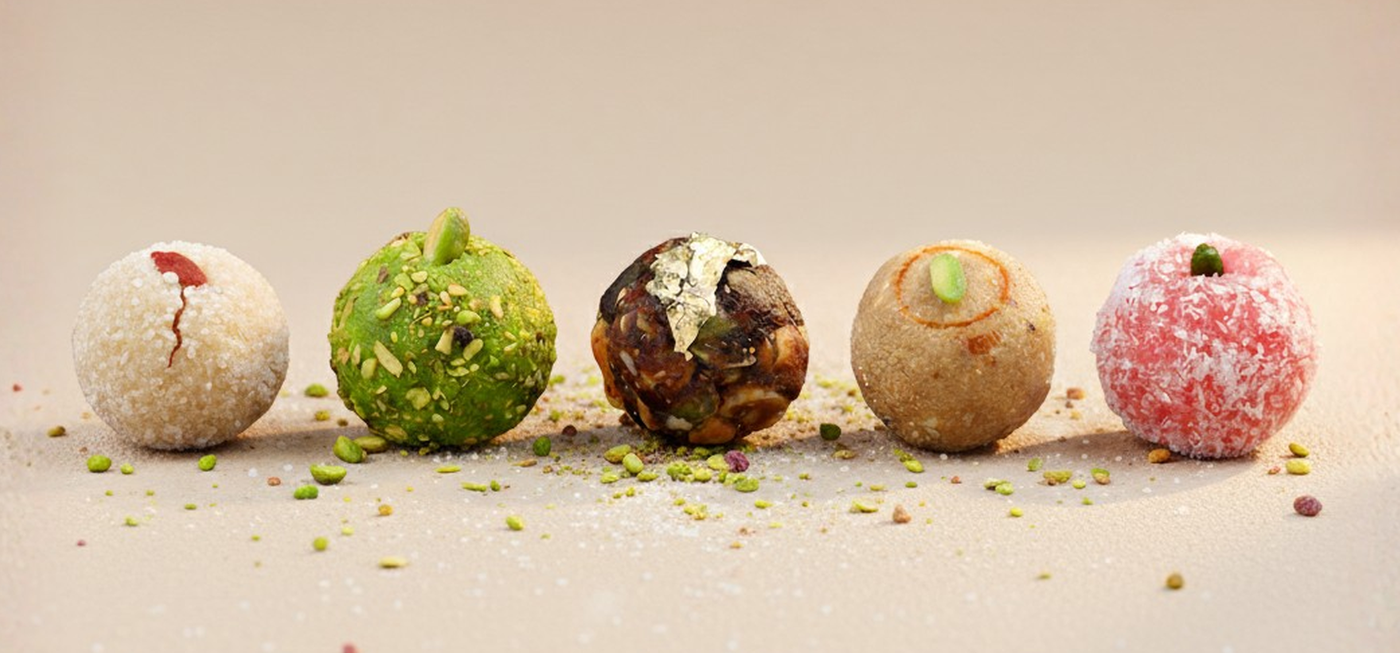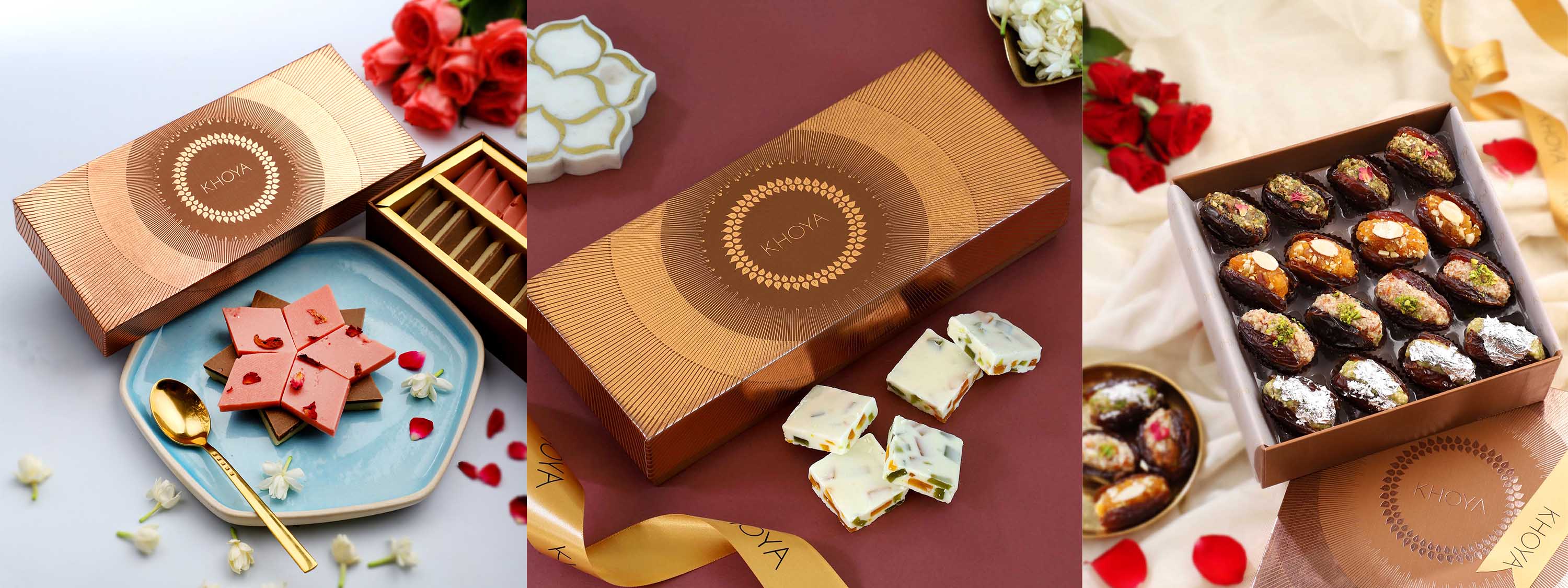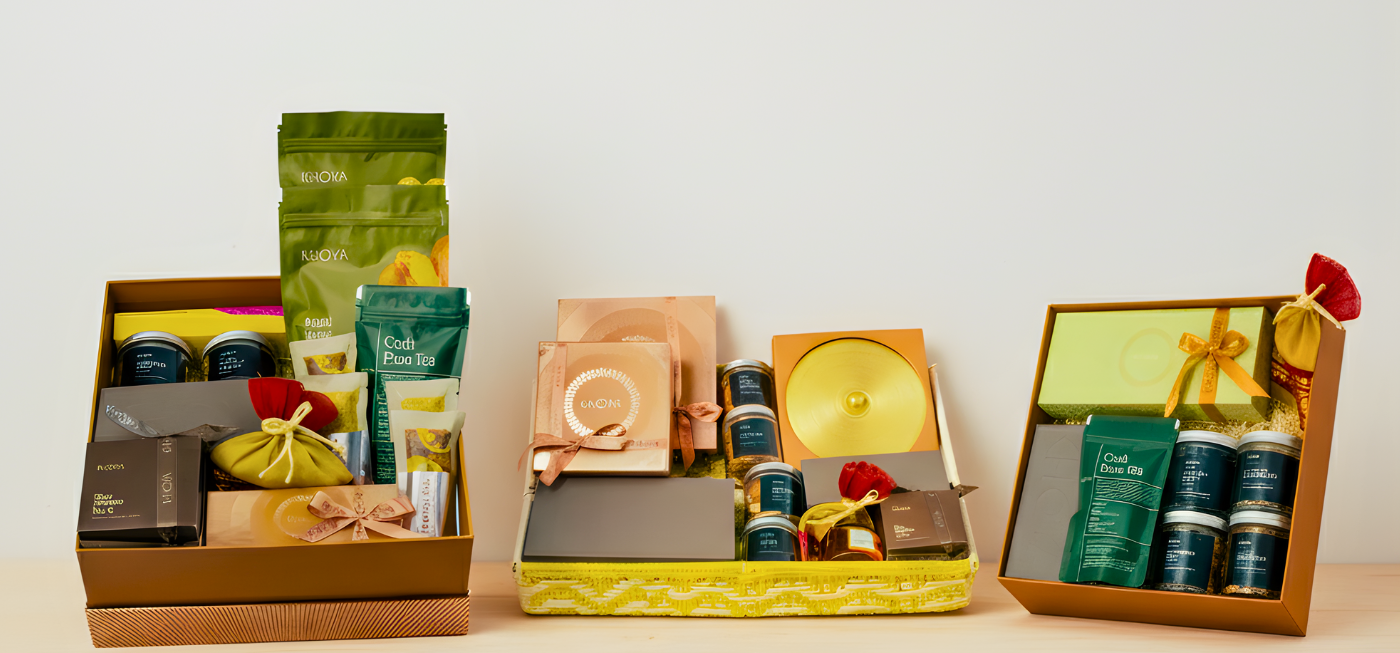
Circle of Sweets: Inside KHOYA’s Artisanal Ladoo Box
There’s something about a ladoo that makes it more than just a sweet — it’s a moment, a memory, a little sphere of joy that finds its way into every phase of life. As children, it was the first thing we reached for in the Diwali mithai box, often with sticky fingers and wide eyes.
At family gatherings, it was passed around on silver trays, always disappearing faster than anything else. In offices, whenever a client sent over a Diwali gift box, the ladoos were the first to vanish — a silent consensus across teams. Late at night, when celebrations quieted and conversations lingered, it was the last sweet standing — soft, rich, and oddly comforting.
The journey of a ladoo travels across age, occasion, and emotion. And while the shape may stay the same, the flavours, textures, and traditions they carry have only grown richer. At KHOYA, we honour this journey through our collection of artisanal ladoos — each one a tribute to both heritage and craft.
Dry Fruit Ladoo
Often claimed as today’s "energy balls," the dry fruit ladoo carries within it a legacy far older than modern wellness trends. Across India, families would gather around brass plates, hand-rolling dates and nuts into dense, compact spheres — nourishment disguised as sweetness.
At KHOYA, this tradition is honoured with a careful balance of Medjoul dates, figs, almonds, pistachios, and seeds, all bound together with organic jaggery. Legend traces versions of this ladoo back to the royal kitchens of Gujarat, where queens would commission nutrient-rich sweets for long journeys or ritual fasts. Rich in fiber, natural sugars, and micronutrients, this ladoo isn’t just healthy — it’s heirloom nourishment, shaped with care.
Pink Coconut Ladoo
It’s the sweet that invites curiosity — both for its blush hue and its unmistakable aroma. The Pink Coconut Ladoo is KHOYA’s tribute to the festive trays of the ‘80s and ‘90s, where shredded coconut sweets, tinged with food-safe pink, were the first to disappear at weddings and Diwali parties.
At KHOYA, the hue comes not from dye, but from beetroot extract — subtly earthy and purely natural. The soft, chewy interior pairs slow-roasted khoya with desiccated coconut, finished with a hint of cardamom. Folklore from coastal Maharashtra says the pink coconut sweet was once gifted to travelling hermits as a token of good harvest — a sweet of prosperity, wrapped in simplicity.
Kesar Motichoor Ladoo
Delicate, melt-in-the-mouth boondi pearls, soaked in saffron syrup and gathered into golden globes — the Kesar Motichoor Ladoo is craftsmanship disguised as confection. Long associated with Mughal courts, where chefs would infuse sweets with the prized spice threads of saffron, the motichoor ladoo evolved from a temple offering into a statement of finesse.
At KHOYA, the boondi is fried in pure ghee, hand-drained, then gently folded into a kesar sugar syrup that's neither cloying nor heavy. The result is a sweet that holds its shape but dissolves in the mouth — a true measure of mastery. This ladoo isn’t just festive — it’s ceremonial.
Roasted Besan Ladoo
It begins with the aroma — the warm, nutty scent of chickpea flour slowly roasted in ghee until it deepens to a golden hue. The Roasted Besan Ladoo is a classic that needs no introduction, but deserves a second glance.
At KHOYA, this ladoo is patiently stirred by hand — a process that can’t be rushed — until the flour is just shy of caramelised. Legend has it that this ladoo evolved from Mohanthal, a 12th-century Gujarati sweet named after Lord Krishna himself, and adapted over time in royal kitchens across Rajasthan and Punjab.
Blended with powdered sugar and laced with stone-ground cardamom, the ladoo is shaped while still warm — firm on the outside, soft at its heart. One bite, and it’s Diwali at your grandmother’s home again.
Anjeer Ladoo
This one doesn’t announce itself with syrup or shine — it speaks in texture, in quiet richness, in restraint. The Anjeer Ladoo is for those who seek their sweetness with depth. Made with sun-dried figs slow-cooked until just soft, then blended with pistachios, almonds, and cardamom, this ladoo is chewy, nutty, and naturally sweet — no refined sugar, just the pure richness of dried fruit. In traditional kitchens across India, figs were prized for vitality and digestion — a sweet you could feel good about.
At KHOYA, we keep that spirit alive, shaping each piece by hand, without losing the luxurious finish we’re known for. The Anjeer Ladoo is earthy, elegant, and quietly unforgettable — the one you save for yourself after the guests have gone.
Chana Badam Ladoo
Not every ladoo has a story. Some are built on balance. The Chana Badam Ladoo quietly marries the wholesomeness of roasted chana flour with the creamy depth of Californian almonds — a pairing that surprises the palate with its earthy bite and textural play. This ladoo likely found its roots in rural Madhya Pradesh, where farmers combined chickpeas and nuts into nutrient-rich sweets during harvest festivals.
At KHOYA, the almonds are stone-milled into a delicate paste, folded into the roasted gram flour, sweetened with organic sugar, and kissed with hand-ground cardamom. The result is a sweet that’s both satisfying and surprisingly refined — the kind you reach for mid-meal, or late at night, long after the trays have been cleared.
Each KHOYA ladoo is more than a sweet — it’s a time capsule. A bite that catapults you back to school holidays and bursting Diwali trays. A scent that echoes the warmth of your mother’s kitchen. That quiet moment when only one remains — and everyone’s eyeing it. These aren’t just treats; they’re edible memories, hand-rolled and steeped in nostalgia.
At KHOYA, we craft ladoos that don’t just taste exquisite — they tell a story. So whether you’re gifting across generations, hosting with flair, or stealing a late-night bite, let your Diwali begin — and end — with a ladoo that lingers far beyond the last crumb.







